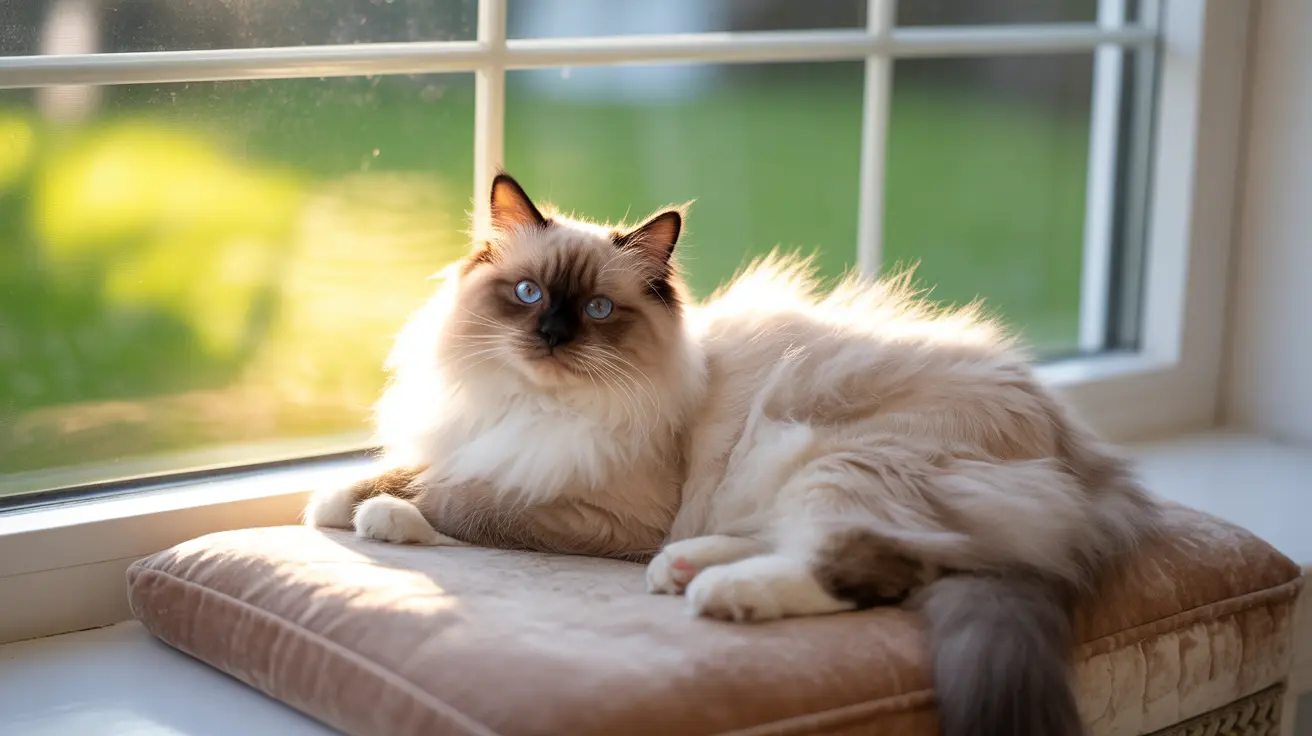The Desert Legacy: Evolution and Heat Preference
Domestic cats are descendants of African wildcats that thrived in desert environments. This ancestral connection explains why your house cat instinctively seeks out warm spots. Their bodies are specifically adapted to handle and even prefer higher temperatures than humans do.
This evolutionary background has equipped cats with unique physical characteristics that make them particularly well-suited to warm environments. Their efficient fur insulation and specialized heat-regulation systems are direct results of their desert heritage.
Understanding Your Cat's Body Temperature
Cats naturally maintain a higher body temperature than humans, typically ranging between 100.5-102.5°F (38-39.2°C). This elevated temperature requires them to seek out warm environments to maintain their optimal body function.
Their higher metabolism and unique physiological adaptations mean that what feels uncomfortably warm to us might be just perfect for them. This explains why you might find your cat lounging in seemingly too-warm spots.
How Cats Regulate Their Temperature
Unlike humans who can sweat across their entire body, cats have limited cooling mechanisms. They primarily sweat through their paw pads and use other methods to maintain their body temperature:
- Grooming to cool down through evaporation
- Seeking warm or cool spots as needed
- Adjusting their body position to regulate heat exposure
- Panting in extreme heat (though this is less common than in dogs)
Signs Your Cat Is Too Hot or Cold
While cats love warmth, there's a limit to what's healthy. Watch for these signs of overheating:
- Excessive panting or drooling
- Lethargy or unusual behavior
- Seeking out cool surfaces
- Decreased appetite
- Rapid breathing
Creating the Perfect Temperature Environment
To keep your cat comfortable and healthy, consider these tips:
- Provide access to sunny windows with comfortable perches
- Offer warm, cozy beds in draft-free areas
- Maintain a consistent indoor temperature
- Ensure cool spots are available during hot weather
- Monitor your cat's behavior for signs of temperature discomfort
Frequently Asked Questions
Why do cats instinctively seek out warm places like sunbeams or radiators?
Cats seek warm places due to their desert ancestry and biological need to maintain their higher body temperature. Warm spots help them conserve energy and provide both physical and psychological comfort.
How does a cat's higher body temperature affect its preference for heat?
Cats' higher natural body temperature (100.5-102.5°F) means they need warmer environments to maintain this temperature efficiently. This makes them naturally drawn to heat sources that help them maintain their optimal temperature range.
What are the signs that my cat might be overheating or suffering from heat exhaustion?
Watch for excessive panting, drooling, lethargy, rapid breathing, vomiting, or stumbling. If you notice these signs, move your cat to a cooler area and contact your veterinarian immediately.
How do cats regulate their body temperature if they don't sweat like humans?
Cats regulate temperature through their paw pads, grooming (evaporative cooling), panting in extreme cases, and by seeking appropriate temperature environments. They also use their fur as insulation and can adjust their activity levels to manage body heat.
Should I provide extra warmth for my cat during colder months, and how?
Yes, especially for elderly or short-haired cats. Provide heated beds, warm blankets, or thermal mats. Ensure sleeping areas are away from drafts and maintain a consistent indoor temperature. Monitor your cat's behavior to ensure they're comfortable.






